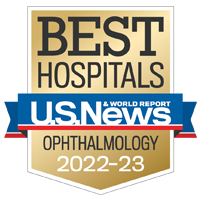
X-Linked Retinoschisis
X-linked retinoschisis (also known as X-linked juvenile retinoschisis) is an inherited eye disorder that occurs almost exclusively in males. Although it begins at birth, the condition is usually not diagnosed until the early school years, when the child has difficulty seeing the blackboard. X-linked retinoschisis is caused by a splitting of the retina (the light-sensitive tissue at the back of the eye), which affects the eye's macula. The macula is part of the retina that is responsible for color perception and central vision, which is needed for detailed tasks such as reading, writing, driving and seeing other fine details clearly. In some cases, peripheral (side) vision is also affected.
Some people with X-linked retinoschisis retain useful vision well into adulthood, while others experience a rapid decline during childhood. In rare cases, the condition can cause serious complications, such as retinal detachment and vitreous hemorrhage, resulting in severely impaired vision or blindness.
Our Approach to X-Linked Retinoschisis
UCSF's ophthalmologists provide comprehensive evaluations and care for all types of eye conditions, from the most common to the rare and complex. They are experts in inherited eye diseases, such as X-linked retinoschisis.
Although X-linked retinoschisis currently has no cure, medication is available that may improve vision. Researchers are working to uncover new treatments, and interested patients may be able to receive experimental therapies by joining a clinical trial. In the rare event that patients develop complications requiring surgery, UCSF has the largest eye surgery program in Northern California.
Low-vision aids, mobility training and other supportive care can also help patients with performing everyday tasks.
Awards & recognition
-

Among the top hospitals in the nation
-

Best in Northern California for ophthalmology
UCSF Health medical specialists have reviewed this information. It is for educational purposes only and is not intended to replace the advice of your doctor or other health care provider. We encourage you to discuss any questions or concerns you may have with your provider.





